#1983 birth years
Text

Vintage 1983 Limited Edition Original Parts 40th Birthday Gift T-Shirt
Get yours now: https://www.teepublic.com/t-shirt/46815771-vintage-1983-limited-edition-original-parts-40th-b
vintage1983 #classof1983 #40thbirthday #40yearsold #40yearsofbeingawesome #madein1983 #bornin1983 #madein1983 #birthday #bday #vintage #retro #limitededition #originalparts #1983birthday #1983legends #birthdaygift #gifts #tshirt #since1983 #retro1983 #birthday1983
#1983#vintage 1983#1983 birthday#born in 1983#made in 1983#since 1983#1983 legend#1983 legends#birthday 1983#1983 birth years#birthday#vintage#retro#tshirt#40th birthday#40 years old#40 years of being awesome#1983 all original parts#1983 limited edition
0 notes
Text

Emma before she was Glamour (circa 1983)
2 notes
·
View notes
Text
Ooh I am angry
OH I'm angry
did some maths about Men I Have Known and I am ANGRY
oh my god there's so much SHIT I'm still GETTING TO I'm so BORED OF IT
#red said#i would like to stop Realising Things#it's fucking. tedious.#but also hey blanket statement. if you were born before 1990 and we were '''''''friends'''''''' before 2011 guess what. die.#I'm turning 30 this year do the maths. hope you feel like shit 24/7 eat my absolute ass#1987. 2008-2010. fuck me.#1988. 1985. 1979. 1983. all before 2013. fuck that.#1979 is off the hook to a certain extent for at least waiting for legal adulthood and checking in. nevertheless.#some i don't know but in retrospect guessing at least 1989 if not earlier#people of all those birth years are fine NOW to be clear. but not in 2010.
10 notes
·
View notes
Text
Women's Not So Distant History
This #WomensHistoryMonth, let's not forget how many of our rights were only won in recent decades, and weren’t acquired by asking nicely and waiting. We need to fight for our rights. Here's are a few examples:

📍 Before 1974's Fair Credit Opportunity Act made it illegal for financial institutions to discriminate against applicants' gender, banks could refuse women a credit card. Women won the right to open a bank account in the 1960s, but many banks still refused without a husband’s signature. This allowed men to continue to have control over women’s bank accounts. Unmarried women were often refused service by financial institutions entirely.
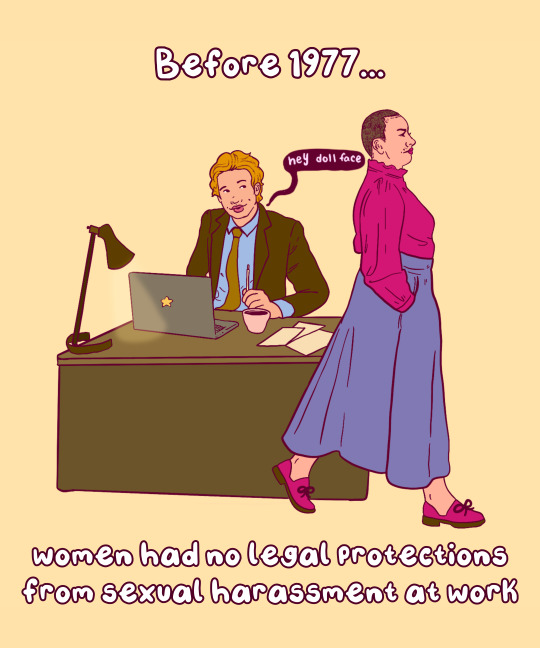
📍 Before 1977, sexual harassment was not considered a legal offense. That changed when a woman brought her boss to court after she refused his sexual advances and was fired. The court stated that her termination violated the 1974 Civil Rights Act, which made employment discrimination illegal.⚖️
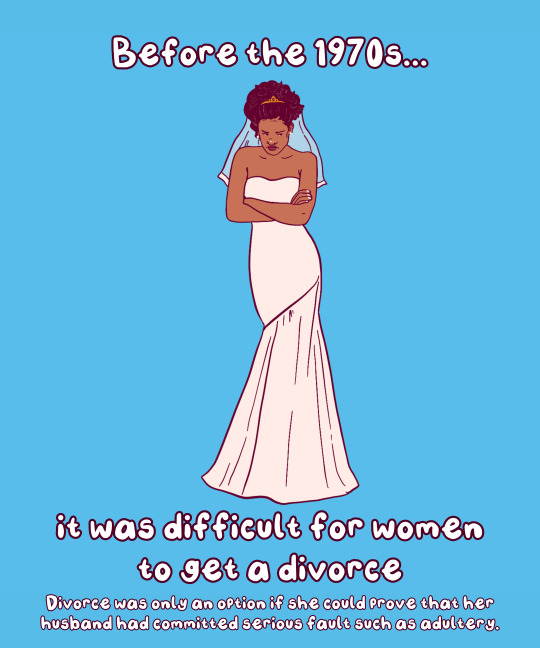
📍 In 1969, California became the first state to pass legislation to allow no-fault divorce. Before then, divorce could only be obtained if a woman could prove that her husband had committed serious faults such as adultery. 💍By 1977, nine states had adopted no-fault divorce laws, and by late 1983, every state had but two. The last, New York, adopted a law in 2010.
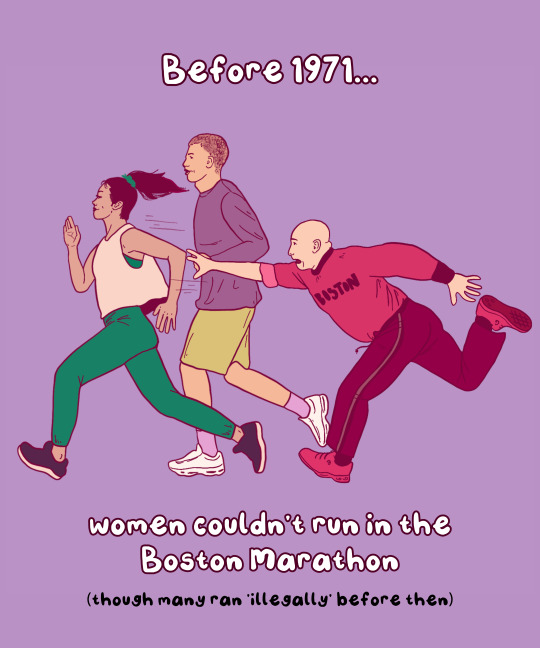
📍In 1967, Kathrine Switzer, entered the Boston Marathon under the name "K.V. Switzer." At the time, the Amateur Athletics Union didn't allow women. Once discovered, staff tried to remove Switzer from the race, but she finished. AAU did not formally accept women until fall 1971.

📍 In 1972, Lillian Garland, a receptionist at a California bank, went on unpaid leave to have a baby and when she returned, her position was filled. Her lawsuit led to 1978's Pregnancy Discrimination Act, which found that discriminating against pregnant people is unlawful
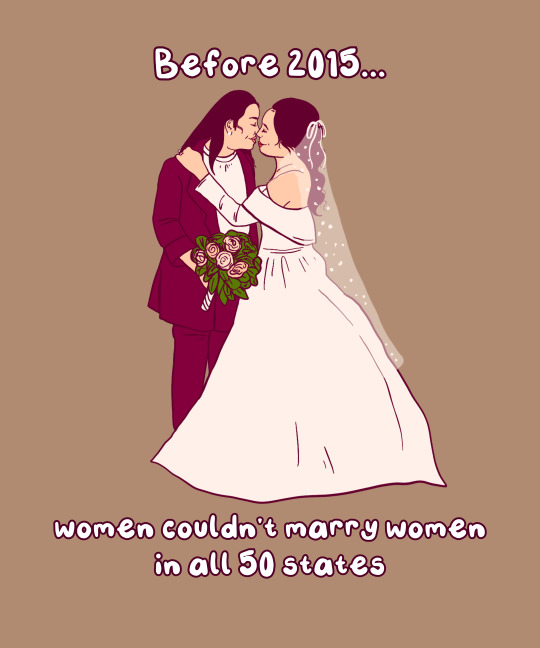
📍 It wasn’t until 2016 that gay marriage was legal in all 50 states. Previously, laws varied by state, and while many states allowed for civil unions for same-sex couples, it created a separate but equal standard. In 2008, California was the first state to achieve marriage equality, only to reverse that right following a ballot initiative later that year.

📍In 2018, Utah and Idaho were the last two states that lacked clear legislation protecting chest or breast feeding parents from obscenity laws. At the time, an Idaho congressman complained women would, "whip it out and do it anywhere,"
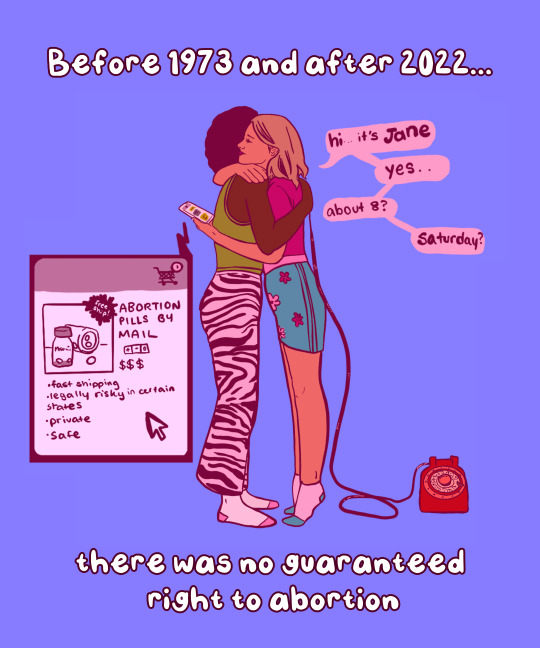
📍 In 1973, the Supreme Court affirmed the right to safe legal abortion in Roe v. Wade. At the time of the decision, nearly all states outlawed abortion with few exceptions. In 1965, illegal abortions made up one-sixth of all pregnancy- and childbirth-related deaths. Unfortunately after years of abortion restrictions and bans, the Supreme Court overturned Roe in 2022. Since then, 14 states have fully banned care, and another 7 severely restrict it – leaving most of the south and midwest without access.
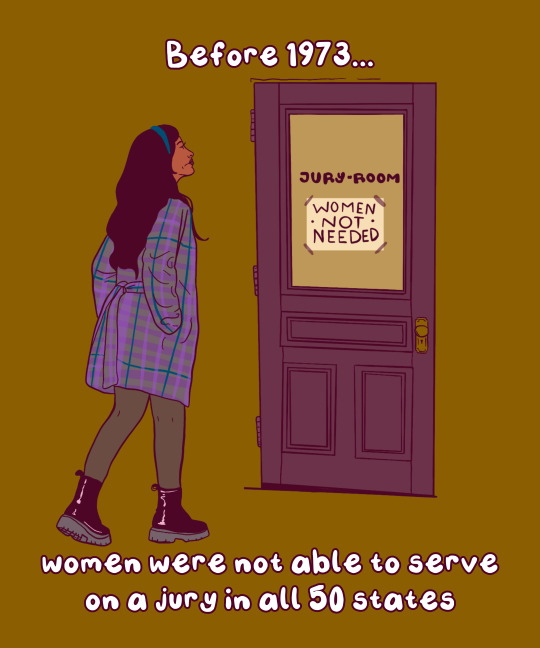
📍 Before 1973, women were not able to serve on a jury in all 50 states. However, this varied by state: Utah was the first state to allow women to serve jury duty in 1898. Though, by 1927, only 19 states allowed women to serve jury duty. The Civil Rights Act of 1957 gave women the right to serve on federal juries, though it wasn't until 1973 that all 50 states passed similar legislation

📍 Before 1988, women were unable to get a business loan on their own. The Women's Business Ownership Act of 1988 allowed women to get loans without a male co-signer and removed other barriers to women in business. The number of women-owned businesses increased by 31 times in the last four decades.
Free download

📍 Before 1965, married women had no right to birth control. In Griswold v. Connecticut (1965), the Supreme Court ruled that banning the use of contraceptives violated the right to marital privacy.
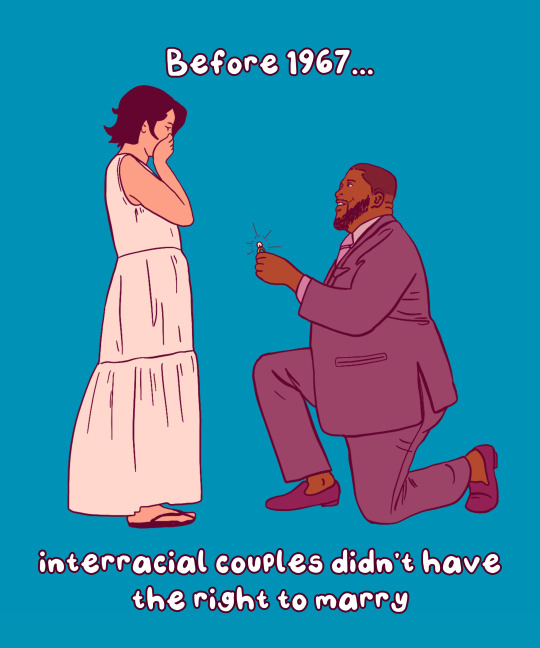
📍 Before 1967, interracial couples didn’t have the right to marry. In Loving v. Virginia, the Supreme Court found that anti-miscegenation laws were unconstitutional. In 2000, Alabama was the last State to remove its anti-miscegenation laws from the books.

📍 Before 1972, unmarried women didn’t have the right to birth control. While married couples gained the right in 1967, it wasn’t until Eisenstadt v. Baird seven years later, that the Supreme Court affirmed the right to contraception for unmarried people.
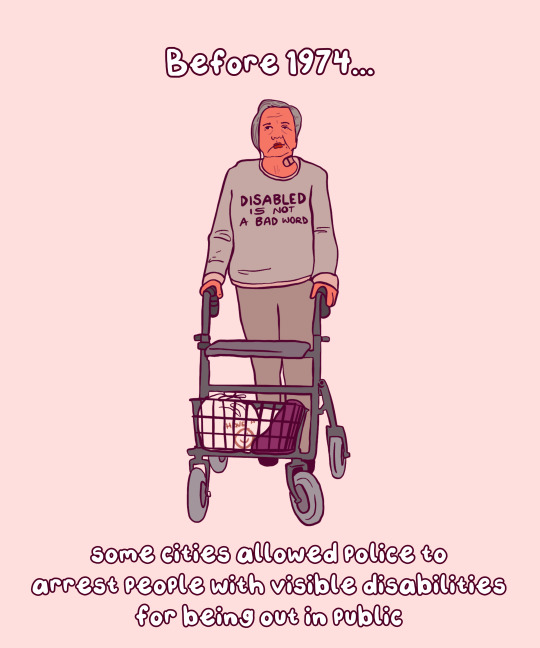
📍 In 1974, the last “Ugly Laws” were repealed in Chicago. “Ugly Laws” allowed the police to arrest and jail people with visible disabilities for being seen in public. People charged with ugly laws were either charged a fine or held in jail. ‘Ugly Laws’ were a part of the late 19th century Victorian Era poor laws.

📍 In 1976, Hawaii was the last state to lift requirements that a woman take her husband’s last name. If a woman didn’t take her husband’s last name, employers could refuse to issue her payroll and she could be barred from voting.

📍 It wasn’t until 1993 that marital assault became a crime in all 50 states. Historically, intercourse within marriage was regarded as a “right” of spouses. Before 1974, in all fifty U.S. states, men had legal immunity for assaults their wives. Oklahoma and North Carolina were the last to change the law in 1993.
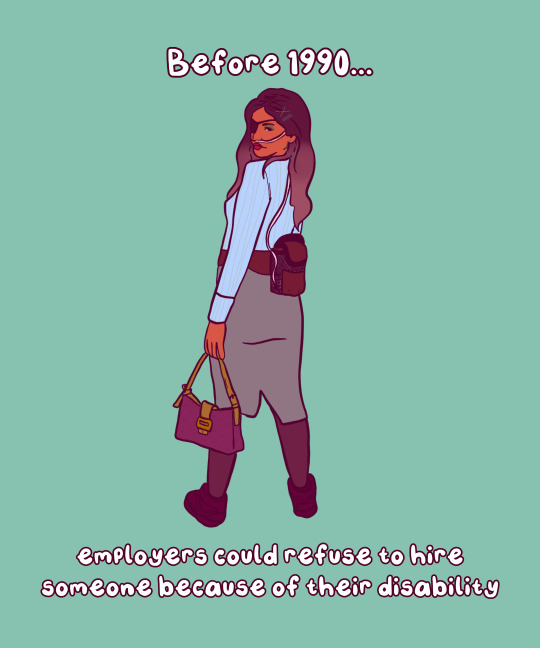
📍 In 1990, the Americans with Disability Act (ADA) – most comprehensive disability rights legislation in U.S. history – was passed. The ADA protected disabled people from employment discrimination. Previously, an employer could refuse to hire someone just because of their disability.
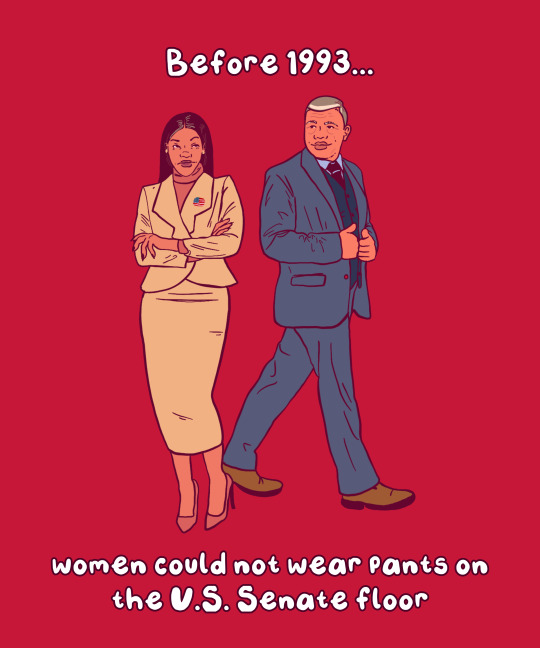
📍 Before 1993, women weren’t allowed to wear pants on the Senate floor. That changed when Sen. Moseley Braun (D-IL), & Sen. Barbara Mikulski (D-MD) wore trousers - shocking the male-dominated Senate. Their fashion statement ultimately led to the dress code being clarified to allow women to wear pants.

📍 Emergency contraception (Plan B) wasn't approved by the FDA until 1998. While many can get emergency contraception at their local drugstore, back then it required a prescription. In 2013, the FDA removed age limits & allowed retailers to stock it directly on the shelf (although many don’t).

📍 In Lawrence v. Texas (2003), the Supreme Court ruled that anti-cohabitation laws were unconstitutional. Sometimes referred to as the ‘'Living in Sin' statute, anti-cohabitation laws criminalize living with a partner if the couple is unmarried. Today, Mississippi still has laws on its books against cohabitation.
#art#feminism#women's history#women's history month#iwd2024#international women's day#herstory#educational#graphics#history#70s#80s#rights#women's rights#human rights
16K notes
·
View notes
Text
Steve wakes up to a beeping noise- a heart monitor. He struggles to open his eyes, turning to squint around the hospital room. Something about it feels off, though he can’t tell what.
A woman stumbles in, almost spilling her coffee. She looks familiar.
“Hey,” Steve tries, only to end up coughing. His throat is painfully dry.
“Steve!” She exclaims. She hurries over, swapping the coffee for a plastic cup of water. She carefully holds it to his mouth for him to drink. “You have no idea how happy I am to see you awake! I know we can’t talk here but… fuck, man, you really had us scared for a minute. Promise me you won’t do anything like that again!”
“I promise?”
“Oh! Eddie finally woke up too! Just the other week. He keeps asking about you, I should go-”
Steve is only more confused. There’s only one Eddie he knows and that Eddie wouldn’t be caught dead worrying about someone like Steve. Not unless...
“Munson?”
“Duh. Oh! Nancy! I was supposed to- you’re ok, right? I’ll just be a minute!”
“Yeah, sure.”
She throws him a thumbs up, darting out the room, calling for Nancy.
His head throbs. He’s not sure what is going on, what happened… maybe that thing in the Byers house did get him after all? Maybe this is just a dream.
"Ah, Mr Harrington," a nurse greets with a warm smile. "It's good to see you awake. I'm just going to check your vitals and all of that stuff, then we'll need to go over some questions. Does that sound alright?"
"Questions?"
"You've been asleep for a few weeks. We need to make sure that everything up there is ok." She lightly raps her knuckles on the side of her head.
Despite how light she's trying to be, Steve feels a sinking in his stomach.
"Is that possible? What- what could be wrong?"
"Nothing too serious. You're speech is clear and legible, you're conscious and cognitive." She lifts the clipboard off the end of the hospital bed. "You remember your name?"
"Yeah," he says. After a moment, he realizes; "oh! Right, sorry. Steve Harrington."
"Date of birth?"
"April 29th, 1967."
"Do you know what todays date is?"
"Um... how long have I been out? You said a few weeks, right?"
"Almost three weeks, yes."
"Three weeks, so that would make today... December 4th?"
She doesn't respond for a moment. The way she keeps her eyes on the clipboard feels too calculated.
"The year?"
"Uh... 1983?"
She only pauses for a moment, before continuing to ask simple questions about current events, how he's feeling, where he feels any pain or discomfort.
He lies when she asks if he remembers what caused him to be hospitalized. He's not sure what the story Nancy and Byers will give. He can't imagine people... involved, would want the truth out. And he's not willing to risk whatever consequences will come with that.
"I'm going to talk with your doctor," she finally says. "I'll be one minute."
"Wait! What- am I ok?"
"Your doctor will explain everything, don't worry."
Amnesia, his doctor explains.
Three years of his life, gone. They try to reassure him, say that it's still early days and he could completely regain his memory, no problem.
But they don't know. Not really. It's all 'possibly's, and 'maybe's. No guarentee. There's still a chance that he may never remember.
The woman who ran in when he woke up, sat by his bedside and holding his hand in a death grip, doesn't look anymore reassured by their optimism than he is.
"We're... close?" He asks her.
"Yeah," she says, forcing a smile. "Platonic soulmates. It's, um... Robin, by the way. Robin Buckley."
"Do we have that... Mrs Click, you sit behind me, right?"
"Yeah. Yeah, I did." She looks stunned, almost dazed. "I didn't think you remembered, or even noticed me."
"How could I not? You're hilarious!"
"What? We never-"
"Oh, uh, you're muttering. Behind me. It wasn't exactly, um... quiet."
"Oh my god," she slaps a hand to her mouth, eyes wide. "You heard me talk about you!"
"Yeah, like I said; you're funny."
Luckily, someone else bursts into the room, interrupting whatever epiphany Robin is having.
"Steve!" He yells.
The guy looks like a kid, barely out of middle school. But he rushes to Steve, eyeing him up like he's Steves babysitter.
"Uh, hi?"
"Oh no," is the kids response. He turns to Robin. "How much does he remember?"
"He is right here, you know."
"I think some time in 83?" Robin replies, ignoring him.
"Before or after the whole... uh..." He glances at Steve with suspicion, then pointedly to the door.
"Jesus," Steve mutters, rubbing at the crease between his brows. "Did Nancy and Jonathan tell you, or what?"
"Tell us about... what?"
He rolls his eyes at them, pointing to the kid. "Whatever has short stack paranoid. The thing with the-" he flops one hand around, raised towards the ceiling, "the lights."
"Do you remember anything that happened after that?" The kid quickly asks. "At the hospital, and Will?"
"You mean the Byers kid? Isn't he, like... dead?"
"So you... don't remember me."
"Sorry?"
"It's fine," he lies.
Steve hates how sad the kid sounds. He glances between the two of them, both seemingly wallowing quietly about the situation.
"Which room is Munson in?" He asks, breaking the silence.
"What?" The kid frowns. "Eddie? Why?"
"Which room?"
"He's two doors down to the left," Robin answers. "Why- woah! Don't get up! You're still-"
"I'm fine," Steve gently pushes her away, ignoring both of them trying to plead for him to get back into bed.
Despite the bandages, bruises and sick look to him, Munson somehow looks better than Steve remembers him looking. The longer hair definitely suits him.
"Steve?" He frowns. He tries to sit up but, grimacing, he soon stops. "What the hell are you doing up? You're gonna freak Dustin out."
"Dustin? That the kid?" He asks, grunting as he sits on the edge of his bed.
"What do-" he pauses, expressions slowly twisting with the horror and realization. "Yeah. Yeah, man, Dustin is the kid."
"Right. So... um... we're friends now?"
Eddie winces. "We haven't exactly had time to talk about... that."
"What? It's been years!"
"It's not that simple."
"Are you saying that because it's true or because you don't-"
"Because it's true," Eddie rolls his eyes. "A lot has happened since then, Steve. You fell in love with Wheeler."
"What?" Steve can't hide his confusion. "Nancy?"
"Yes, Nancy. You made sure everyone fucking knew about that."
Steve snorts, having to grab at his side with a wince. He bites the inside of his cheek to keep himself from laughing.
"So you're still easy to rile up?" He asks, smirking.
"Wh- you-" Eddie gasps. He tries to sit up again, grunting when he flops back down. "You were trying to make me jealous?!"
He's looking at Steve with disbelief, but he's also smiling.
"Are we friends now?" Steve asks.
"Yeah, Stevie. We're friends."
"Just friends?"
"I don't... Steve, how bad is your amnesia?"
Steve quickly looks away, wincing. "Not... that bad? I remember that- the first time. This, um... monster shit. Falling out with Tommy. And the doctors are optimistic- they're pretty sure I'm going to remember."
"Alright... maybe it'd be better if we talk then, instead of rushing into it now."
"Jesus," Steve frowns. "I really have missed a lot. When did you get mature?"
"Hey-"
#stranger things#steve harrington#eddie munson#steddie#robin buckley#platonic with a capital p#steddie fic#ficlet#hurtcomfort
2K notes
·
View notes
Text
Afton Kids ft. Charlie Emily - Circa 1983

Artist's Note:
By the way, Evan and Elizabeth's birth order is different in this AU
Evan is the middle child, and Elizabeth is the youngest :]
Charlie and Mike are the same age (roughly 12-13 years old)
#hidden hands au#afton family#afton kids#evan afton#fnaf crying child#michael afton#mike afton#elizabeth afton#charlie emily#charlotte emily#five nights at freddy fanart#fnaf#five nights at freddy's#my art
973 notes
·
View notes
Text
Misunderstanding
I received a note from someone who was upset I “failed to cite Scott McCloud’s Understanding Comics” in my research for my work on Neil Gaiman's Chivalry and the essays I wrote about it.
I really appreciate that people want to make sure credit goes where it's due, and I have a lot of respect for Scott McCloud's accomplishment with his wonderful book.
I haven't read it myself in some years, and didn't cite it in my articles because I didn't reference it. I don't even know where my copy is so I don't know what McCloud referenced, either.
The information in my articles re: illuminated manuscripts and the Bayeux Tapestry, as well as other theories about the development of sequential art from prehistory, not only predate McCloud's work (and in fact, predate McCloud's birth,) but they are so common and so well known in comics circles that asking me to cite them seems as weird to me as asking me to cite the information that George Washington was the first President of the United States.
A part of me wonders if someone is trying to play, "Let's you and him fight."
No.
But I’m happy to bring to your attention some reading material.
Stephen Becker in his 1959 work Comic Art in America: A Social History of the Funnies, the Political Cartoons, Magazine Humor, Sporting Cartoons, and Animated Cartoons was among the first to discuss the Bayeux Tapestry as comic art. I read that book sometime in the 1980’s. I think a lot of people assume the Bayeux tapestry as comic art was McCloud’s idea, but we don’t all walk around with a reference library in our heads, so there you go. I can’t find my copy of Becker’s work to quote, but I did find an article by Arthur Asa Berger with a mention of the Bayeux Tapestry as comic art in the summer 1978 issue of The Wilson Quarterly.

My first exposure to the idea of comics as descendant of fine art was Maurice Horn’s 1976 The World Encyclopedia of Comics which was my first read re: comics history. I still have my tattered 1976 edition.
While Horn scorned the idea that tapestries and manuscripts could be comic art (see, it was a matter of discussion way back then, so much so that authors were writing snarky asides to one another about it,) he believed the origin of sequential art was in the Renaissance sketches of Leonardo da Vinci - which I think everyone now agrees is kind of a bonkers idea.

I think Horn was just intent on elevating the comic art form by hooking up with da Vinci.
You go, boi.
Comics as descendant of art on scrolls is a very common theory, the easiest to trace being in Manga! Manga! The World of Japanese Comics by Fred Schodt published in 1983 when I was still a teenager. I can't find my copy to show examples, but this text is still in print and you can go read it for yourself.
I was introduced to manga by cartoonist Leslie Sternbergh and bought Schodt’s book at Books Kinokuniya on (I think) a trip to New York around the time of first publication of Schodt’s work. And years later took a trip to Japan with Fred Schodt and a group of cartoonists including Jeff Smith and Jules Fieffer, Nicole Hollander, and Denys Cowan as the guests of Tezuka Productions.
Here we all are.

So, I’m familiar with manga, see.
As for comics as descendant of cave paintings, hieroglyphics and ancient art in general, Will Eisner’s 1985 Comics and Sequential Art not only made all of those points, but made those points with comic art examples. Like these.

And this.

And this.

And more than a few words on this:


I find it amusing that someone is questioning why I didn’t cite McCloud when what you should probably be questioning is why more people don’t cite Eisner who produced his book eight years before McCloud published his and who is well known to have influenced McCloud.
Whatever. My book's autographed.
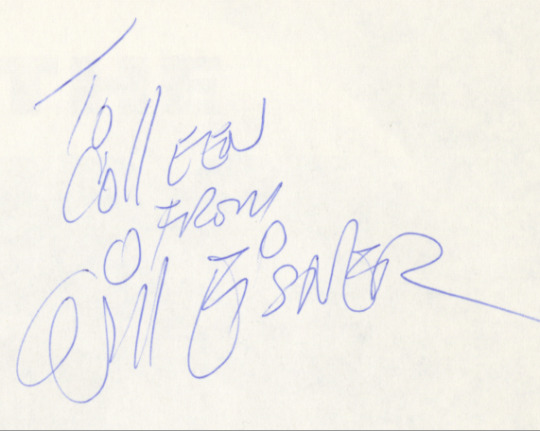
I also danced with Eisner. Eat your heart out.
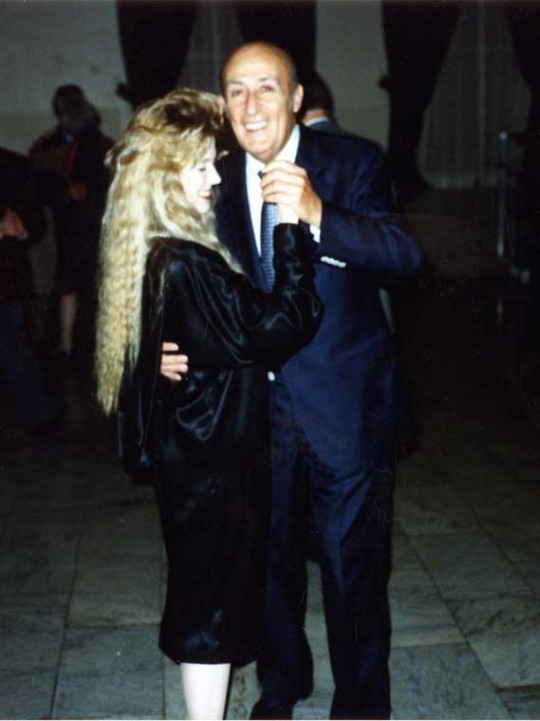
Understanding Comics is a terrific work with huge advantages over every book (that I know of) about comics that came before: it taught comics entirely in the language of comics.
But the discussion in it about the origins of comics and my work especially re: illuminated manuscripts/tapestries, did not originate with McCloud. I research illuminated manuscripts because it’s my hobby and it informs my art.
I encourage everyone to read Understanding Comics because it is an outstanding work.
But it’s not the book that introduced me to the concepts of the development of comic art. It’s not even the point of origin of those concepts. So, there is no reason to cite it.
Also, shocking as it may seem, I occasionally come up with ideas on my own. While I'm younger than McCloud, I've actually been a comics pro longer than he has. So I've had plenty of opportunity to, you know, read things and toss things around, and decide for myself.
When I first read Chivalry and first begged Neil Gaiman to let me adapt it, my head full of the work of Alberto Sangorski and his art for Tennyson’s Le Morte D’Arthur, Understanding Comics hadn’t been published yet.
It's been a good twelve years since I last read McCloud's work, and I don't think I've spoken to him five times in the last three decades. But I'm pretty sure he never mentioned Sangorski.
I hope that clears everything up, and maybe introduces some of you to some works you might not be aware of.
Have a great day.
#understanding comics#comics history#neil gaiman#scott mccloud#chivalry#jules fieffer#tezuka productions#manga#will eisner
2K notes
·
View notes
Text

In 1980 Peter Brown, a former assistant to Brian Epstein who later ran Apple Corps, managed the Beatles and was best man at John Lennon and Yoko Ono’s wedding, started work on the definitive account of the Beatles. With the American author Steven Gaines, he spoke to the three surviving band members alongside wives, girlfriends, managers, friends, hangers-on and everyone else in the Fabs’ universe. The book promised to be the last word in Beatles history. Then in 1983 The Love You Make was published, and all hell broke loose.
“They were furious,” recalls Gaines, 78, still sounding pained at the memory. “Paul and Linda tore the book apart and burned it in the fireplace, page by page. There was an omerta, a code of silence around the Beatles, and they didn’t think anyone would come forward to tell the truth. But Queenie, Brian Epstein’s mother, told us above all else to be honest.”
“Even she didn’t think we would be quite so honest,” adds Brown, 87, his upper-crust English tones still in place after five decades in New York.
Why did The Love You Make, retitled by Beatles fans as The Muck You Rake, incite such strong feelings? The suggestion of an affair between Lennon and Epstein on a holiday to Barcelona in April 1963, only three weeks after the birth of Lennon’s son Julian, had something to do with it, but more significantly it was taken as a betrayal by a trusted insider. Brown and Gaines locked the recordings in a bank vault and never looked at them again — until now.
“Very good question,” Brown says, when I ask why he and Gaines have decided to publish All You Need Is Love, an oral history made up of the interview transcripts from which The Love You Make was drawn. He is speaking from the Manhattan apartment on Central Park West where he has lived since 1971. “When [Peter Jackson’s documentary] Get Back came out, a journalist from The New York Times wanted me to talk. I told him I hadn’t talked about the Beatles since the book was published and suggested he go to someone else. He said, ‘There isn’t anyone else. Paul, Ringo and you are the only ones left.’ And I thought, do I have a responsibility to clear it all up, once and for all?”
After the death of Epstein in 1967, Brown assumed the day-to-day responsibilities of managing the Beatles and Apple Corps. He had on his desk a red telephone whose number was known only to the four Beatles. Unsurprisingly, given his insider status, the interviews make for fascinating reading. Paul McCartney, yet to be asked the same questions about the Beatles thousands of times over, is remarkably unguarded. Asked by Gaines if the other Beatles were anti-Linda, he replies: “I should think so. Like we were anti-Yoko.” On the image the Fabs had for being good boys on tour, he says, “You are kidding,” before going on to reference a notorious incident involving members of Led Zeppelin, a groupie and a mud shark, concluding: “No, not in the least bit celibate. We just didn’t do it with fish.”
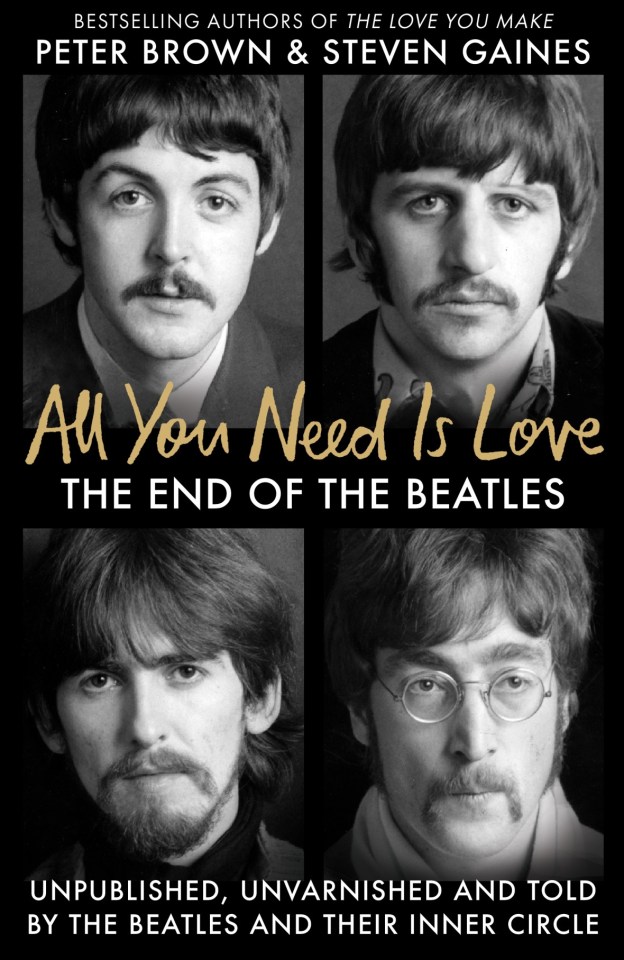
Ono, speaking in the spring of 1981, not long after Lennon was killed in December 1980, reveals that she didn’t sleep with Lennon for the first two years of their relationship — “John didn’t know how to make a move” — and claims that she was blamed by the Beatles camp, George Harrison in particular, for getting Lennon onto heroin in 1969. “Everything we did in those days, anything that was wrong, was my responsibility,” she tells Gaines. But everyone, from the Beatles’ notorious late-period manager Allen Klein to the Greek electronics wizard/hustler “Magic” Alex Mardas — “the Mordred of the Beatles’ Camelot” according to Brown — has their own version of events.
Going through the transcripts reminded Gaines of the long shadow cast by Lennon. “I didn’t realise how sensitive the other Beatles were to John’s opinion,” he says, speaking from his home in the Hamptons, Long Island. “Paul worried about what John would say [in the event Lennon died before being interviewed] and was still longing for his friendship. George said that John didn’t read his autobiography because it was called I, Me, Mine. Those interviews were done before John’s death and Paul’s heart was broken, even then. It wasn’t just the break-up of the Beatles. It was more personal than that.”
From around 1968, the transcripts reveal how the key Beatles duo started to come apart. McCartney’s enthusiasm was only getting stronger. But Lennon grew increasingly bored and disillusioned. “You have to remember that John wasn’t in love with his wife Cynthia,” Gaines says by way of explanation. “He wanted to get away from the life he was leading and that’s why he started to experiment with drugs, all the way up to heroin.”
Brown says Ono was, and probably still is, a distant, mysterious character, exactly the kind of person Lennon was looking for, having done the right thing and married the sensible, quiet Cynthia after she discovered she was pregnant with Julian in 1963. “John told me about meeting this woman, and how frustrated he was that he couldn’t get to know her better; he couldn’t take her to lunch because it would cause gossip. I gave him the key to my apartment so he and Yoko could be together in private and thought, naturally, they were going there to f***. When I went home that evening, the apartment was untouched. They did nothing more than sit on the sofa and talk. That’s what they wanted: to know each other.”
Regarding the long-held, unfair suggestion that Ono broke up the Beatles, Gaines says: “Yoko came along at the right moment to light the fuse, but the dynamite was already packed. They resented her, she was difficult to understand and had a deep effect on John, but they were getting more and more unhappy with each other and needed to have their own lives. As people in the interviews say again and again, [the split] was bound to happen.”
It was Brown who in May 1968 introduced McCartney to Linda Eastman, an ambitious young American photographer whom he knew from his business trips to New York, when she came to London on an assignment to shoot the Rolling Stones. “I was having dinner with Paul at the Bag O’ Nails [a club in Soho] when she turned up, so I introduced them and he was obviously taken with her,” Brown recalls. “The following Friday, May 19, we were holding a party for 12 top photographers at Brian Epstein’s house in London when she walked in. Paul says I didn’t introduce him to his wife … but I did.”
If the book has a villain it is Klein, the New York accountant who took over management of the Beatles and sacked everyone around them, much to McCartney’s horror. As Brown puts it: “He was a hideous person. He even looked like a crook: sloppy and fat, always wearing sneakers and sweatshirts. Everything he didn’t like was ‘for shit’.”
You wonder why Lennon fell for him. “The interviews suggest it is because Allen Klein offered Yoko a million dollars for her movie project,” Gaines says. “She was enticed and John would do anything Yoko said.”
“I asked Mick Jagger to come over and explain to the four Beatles who this Allen Klein was,” Brown remembers. “And John, in his wonderful way, had Klein turn up to the same meeting, which was deeply embarrassing. It made Mick very uncomfortable too.”
Epstein, the man who saw the Beatles’ potential in the first place, is a central figure in All You Need Is Love. It includes a transcript of a recording of him from 1966, not used for the original book. It was in the possession of Epstein’s attorney Nat Weiss, and seemingly made by Epstein to mark the end of the Beatles’ final tour. He claims not only that Lennon felt remorse for the infamous comment on the Beatles being bigger than Jesus — “What upset John more than anything else was that hundreds of people were hurt by that” — but that the Beatles would tour once more. “There’s no reason why they shouldn’t appear in public again,” Epstein claims. They never did, unless you count that rooftop performance on January 30, 1969.
“Brian was driving them around the north of England in his car for a year,” Brown remembers of the early days. “This Jewish guy from Liverpool, who was gay, was with these guys who had been hanging around in Hamburg, so both had interesting backgrounds. They understood each other.”
For Gaines, a self-described “gay Jewish boy from Brooklyn”, Epstein is at the heart of the story. “Brian never felt the love of a real relationship. Then he found the Beatles. Everyone thought it would be just another of his phases, but he had tremendous feelings for John, both sexual and intellectual, and that’s what really pushed him. If there was one thing that started the whole thing off, it was Brian’s love for John Lennon.”
That love affair was the contentious issue of the original book. In his interview, McCartney says of Lennon going to Spain with Epstein: “What was John doing, manipulating this manager of ours? Sucking up to him, going on holiday, becoming his special friend.” It wasn’t the suggestion of a homosexual relationship that was troubling McCartney, but the balance of power tilting in Lennon’s direction.
“Paul wanted to be in charge, and he deserved to be because he was the motor, the driving force,” Gaines says. “Paul felt that John would steal away the power. He felt threatened by John’s relationship with Brian.”
“Paul always wanted to be active,” Brown adds. “After Brian’s death the world had to be carried on. Who was going to do that? It wasn’t going to be John, George or Ringo. Brian was my best friend and I was very upset [at his death]. I had to go to the court to convince the magistrate that it wasn’t a suicide, and the following day Paul set up a meeting so we could discuss what we would do next. I said we’d do it next week, and he said, ‘No, it has to be now.’ He was right.”
How did Brown and Gaines feel about the horrified reaction to the book, not just from fans but the Beatles themselves? “The world has changed,” Gaines says, by way of answer. “Now, after all these years, hopefully people can see it as a truthful, loving and gentle book.” It has been decades since Brown spoke to the surviving Beatles and he has not contacted them about this new publication.
What the interviews really capture in eye-opening detail is the story of four young men who became a phenomenon, then had to deal with the fallout as the dream ended. On December 31, 1970, the day McCartney sued the other three to dissolve the partnership, Brown handed in his resignation as the Beatles’ day-to-day manager and officer of Apple Corps. Ringo Starr said to him: “You didn’t want to be a nursemaid any more, and half the time the babies wouldn’t listen to you anyway.” Brown moved to New York and became chief executive officer of the Robert Stigwood Organisation. But the Beatles never fully left him, and in the wake of Get Back — and the news that Sam Mendes is to direct four biopics, one on each Beatle — he decided he had one last job.
“We have finished our responsibilities,” Brown says with quiet authority. “It is the end of the story.”
EXTRACTS
‘It’s like bloody Julius Caesar, and I’m being stabbed in the back!’
Paul McCartney on the Beatles signing Allen Klein as manager against his wishes
[John Lennon] said, “I’m going with [Allen] Klein, what do you want to do about it?” and I kind of said, “I don’t think I will, that’s my roll.” Then George and Ringo said, “Yeah, we’ll go with John.” Which was their roll. But that was pretty much how it always ended up, the three of them wanted to do stuff, and I was always the fly in the ointment, I was always the one dragging his heels. John used to accuse me of stalling. In fact, there was one classic little meeting when we were recording Abbey Road. It was a Friday evening session, and I was sitting there, and I’d heard a rumour from Neil [Aspinall, road manager] or someone that there was something funny going around. So we got to the session, and Klein came in. To me, he was like a sort of demon that would always haunt my dreams. He got to me. Really, it was like I’d been dreaming of him as a dentist.
Anyway, so at this meeting, everyone said, “You’re going to stall for ever now, we know you, you don’t even want to do it on Monday.” And I said, “Well, so what? It’s not a big deal, it’s our prerogative and it could wait a few more days.” They said, “Oh no, typical of you, all that stalling and what. Got to do it now.” I said, “Well, I’m not going to. I demand at least the weekend. I’ll look at it, and on Monday. This is supposed to be a recording session, after all.” I dug me heels in, and they said, “Right, well, we’re going to vote it.” I said, “No, you’ll never get Ringo to.” I looked at Ringo, and he kind of gave me this sick look like, yeah, I’m going with them. Then I said, “Well, this is like bloody Julius Caesar, and I’m being stabbed in the back!”
‘You don’t like to see a chick in the middle of the team’
Paul McCartney on Yoko Ono
Give Yoko a lot . . . that was basically what John and Yoko wanted, recognition for Yoko. We found her sitting on our amps, and like a football team, an all-male thing, you really don’t like to see a chick in the middle of the team. It’s a disturbing thing, they think it throws them off the game or whatever it was, and these were the reasons that I thought, well, this is crazy, we’re gonna have Yoko in the group next.
Looking at it now, I feel a bit sorry for her because, if only I had been able to understand what the situation was and think, wait a minute, here’s a girl who’s not had enough attention. I can now not make this into a major crisis and just sort of say, “Sure, what harm is she doing on the amps?” I know they would have really loved me. You know, we didn’t like Yoko at first, and people did call her ugly and stuff, and that must be hard for someone who loves someone and is so passionately in love with them, but I still can’t — I’m still trying to see his point of view. What was the point of all that?
They’re very suspicious people [Lennon and Ono], and one of the things that hurt me out of the whole affair, was that we’d come all that way together, and out of either a fault in my character, or out of lack of understanding in their character, I’d still never managed to impress upon them that I wasn’t trying to screw them. I don’t think that I have to this day.
How Cynthia Lennon was driven to drink — at an ashram
Alexis ‘Magic Alex’ Mardas on Ono’s love letters to Lennon
Alexis Mardas was also known as Magic Alex, a name John bestowed on him because he was so taken with Alex’s inventions. Alex was handsome, charming, and a charlatan. (He sued The [New York] Times in Britain for calling him a charlatan and settled out of court. He’s dead now.)
[The Maharishi] was fooling around with several American girls. The Maharishi was making all of us eat vegetarian food, very poorly cooked, but he was eating chicken. No alcohol was allowed in the camp. I had to smuggle alcohol in because Cynthia wanted to drink. Cynthia was very depressed. John was receiving letters from Yoko Ono. Yoko was planning to win John. She was writing very poetic and very romantic letters. I remember those letters because John was coming to me with the letters, and Yoko was saying to John that “I’m a cloud in the sky, and, when you read this letter, turn your head and look in the sky, and if you see a small cloud, this is Yoko. Away from you but watching you.”
Poor Cynthia was prepared to do absolutely everything to win John. She was not even allowed to visit the house where John was staying. She was longing for a drink. Now, drinks, they were strictly prohibited in the ashram, but when it was discovered that Maharishi had a drink, I said, “Just a second, at least equal.”
‘He’s become so nasty’
George Harrison on reaching out to John Lennon
What’s wrong with John, he’s become so nasty. It sounds like he hasn’t moved an inch from where he was five or six years ago. I sent Ringo, John, and Paul all a copy of my book. I got a call from Paul. He called me up just to say how much he liked it. I shouldn’t have called it I Me Mine, because that title was a bit much. I sent a copy to John. I’m wondering if he’s actually received it, if he’s received it, he probably doesn’t like it or something offends him about it.
‘I told John that ... it was just a nice feeling’
Yoko Ono advising John Lennon how to take heroin
George said I put John on H, and it wasn’t true at all. I mean, John wouldn’t take anything unless he wanted to do it. When I went to Paris [before I met John], I just had a sniff of it and it was a beautiful feeling. Because the amount was small, I didn’t even get sick. It was just a nice feeling. So I told John that. When you take it properly — properly is not the right word — but when you really snort it, then you get sick right away if you’re not used to it. So I think maybe because I said it wasn’t a bad experience, maybe that had something to do with it, I don’t know. But I mean so, he kept saying, “Tell me how it was?” Why was he asking? That was sort of a preliminary because he wanted to take it, that’s why he was asking. And that’s how we did it. We never injected. Never.
‘It was time’
Ringo Starr on the end of the Beatles
Ringo Starr: Well, I’m pleased it happened because in so many ways, I’m glad it’s not going now. It was time. Things last only so long.
Steven Gaines: The Rolling Stones are [still] going.
Ringo Starr: Yeah, but they’re old men.
(source)
147 notes
·
View notes
Note
I know this is completely weird n you honestly might not even care I just wanted to let you know someone used your picture on a fake obituary on tik tok
https://www.tiktok.com/t/ZTFMv7vaD/
If that doesn’t work it’s @dovehepburn their pinned video
I wondered if this would make its way to Tumblr.
Daisy Meadows: a pseudonym for multiple authors writing a beloved book series for children, award winning, british, alive
Linsey Miller: a burnt out gifted student writing queer fantasy books for burning-out-as-we-speak students, (rightfully) award losing, american, alive

Is that my author picture? Yes. Am I Daisy Meadows? No. Do I or any of the authors working on those books have a 1983 birth year? Also no. Are any of us dead? Not that I know of. Is it just a content farm engagement farming? Almost definitely.
67 notes
·
View notes
Text
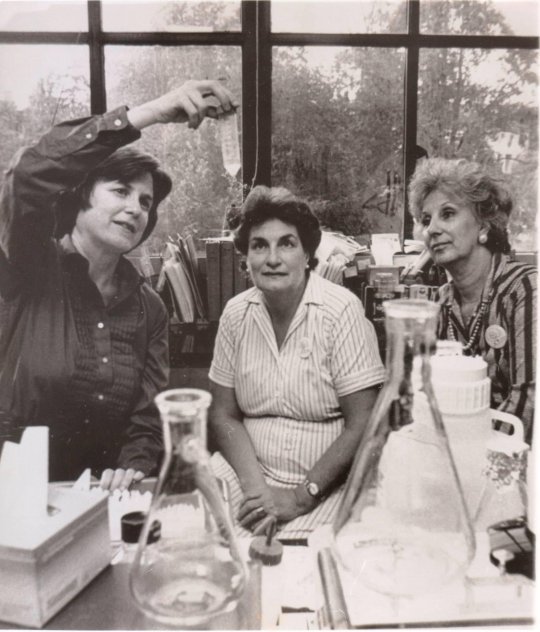
In 1983, geneticist Mary-Claire King (left) explains to Abuelas de la Plaza de Mayo [Grandmothers of the Plaza de Mayo] Nélida Gómez de Navajas (middle) and Estela de Carlotto (right) the technique that will be used to identify their grandchildren stolen during the last civic-military dictatorship of Argentina (1974/6-1983) and prove their kinship in court, el Índice de Abuelidad [the Grandparentage Index]. It's estimated that between 400 and 500 children were taken throughout this time.
Estela was able to hug her grandson, Ignacio Montoya Carlotto, nieto #114 [grandchild #114], in 2014.
Nélida died in 2012 and did not get to meet her grandchild. It was announced two days ago, 28 July 2023, that his identity has been restored. 11 years after she died, 40 years after this photo was taken, and 46 years after his birth to a illegally detained and still disappeared mother, Cristina Navajas, he's been found. His father and brothers are here for him. It is still a victory.
Welcome to the truth, nieto #133, y abrazo al cielo Nélida.
Venceremos.
#i was so so sad for her and her daughter when Nelida died#but watching Miguel change the number on the wall and say his brother is bostero too was beautiful 🖤#argentina#abuelas de plaza de mayo#mary claire king#ana says stuff#todo está guardado en la memoria#arg tag
439 notes
·
View notes
Text
Star Trek: Flip-up Communicator history

Star Trek pilot "The Cage" (1964)
The very first version. It's like those see-through game controllers from the 1990's!

Star Trek: TOS (1966-69) The iconic model. Possibly inspired the concept of mobile phones. The case is made from a chopped up Sterling Plastics pencil case.

Star Trek II: The Wrath of Khan (1982)
A bulky militaristic look. Modified from a real life army radio

Star Trek III: The Search For Spock (1983)
A return to a more classic shape. I think the inner part is from some ATM machine plastic model, but I might be confusing my Trek prop trivia.

Star Trek V: The Final Frontier (1989)
The Search For Spock version with added buttons which remind me of ancient TV remotes.

Star Trek: Enterprise (2001-2005)
Trek's first prequel, set over 100 years before the time of Captain Kirk brought back flip-up communicators after many years of tapping badges in the 24th century.

Star Trek (2009) U.S.S. Kelvin
At the birth of his son and when the Prime and Kelvin timelines split, George Kirk's communicator is a simplified, button-free version of the classic TOS one.

Star Trek (2009) U.S.S. Enterprise
Designed with input from Nokia, the Kelvin Universe version of the classic Trek communicator. 2013's Into Darkness confirms it receives text messages, too - but I'd hate to try typing out a message with that weird button😂

Star Trek: Discovery (2017-)
Another modernisation of the classic TV series one, this time with an animated screen on place of the moire pattern from TOS. Inside that case is an iPhone for the graphics. For the first time in Trek, it's made explicit that the communicators are also universal translators enabling everyone in a room to understand everyone else (even though nobody's lips should sync up and you should hear overlapping voices which only ever happened in Star Trek Beyond)

Strange New Worlds (2022-)
And back to the TOS series version, with some very minor changes. Strange New Worlds is also the first time it's called a phone in dialogue
#star trek#star trek aos#star trek discovery#star trek the original series#strange new worlds#star trek movies#movie prop#props#star trek tos#the original series
1K notes
·
View notes
Photo

Vintage 40th Birthday Decorations Men Funny 1983 40 Birthday T-Shirt
Get yours now: https://www.teepublic.com/t-shirt/42920142-vintage-40th-birthday-decorations-men-funny-1983-4
#1983#born in 1983#made in 1983#birthday 1983#vintage 1983#1983 birthday#1983 birth year#1983 vintage#1983 limited edition#1983 legend#1983 legends#1983 all original parts#classic#vintage#retro#awsome since 1983#since 1983#birthday#Birthday Gift Ideas#bday#40th birthday#40 Years Old#age 40#40th birthday gift#40 years of being awesome#tshirt#1983 birthday gift
0 notes
Text
Shermie Pines Theory
Shermie is one of the most enigmatic characters in Gravity Falls. We know almost nothing about him except that he's Mabel and Dipper's grandfather. Neither Stan or Ford mention him, even in Journal 3. Well, barring any new information that may be coming in The Book of Bill, I have a theory about what happened to Shermie that explains his absence in his brother's lives.
First of all, what do we actually know about Shermie?
He's the grandfather of Dipper and Mabel
He was there when Dipper and Mabel were born
That's it. Timeline-wise, we can figure out a bit more. Dipper and Mabel turn thirteen in August of 2012, making their birth year 1999. In order for Shermie to be their grandfather, he would therefore have to be born before Stan and Ford. So, when were Stan and Ford born?
From Journal 3, we know the portal accident happened in very early 1983. Stan says he hasn't seen Ford in "over ten years" in A Tale of Two Stans, and Ford says he's in his thirties in Journal 3, so (assuming he's 30 - going on 31 - in January 1983) that would push back his graduation date from 1973 to 1970. It can't be earlier than that, because there's a portrait of Nixon in the principal's office, and Nixon was elected in 1969. Subtracting 18 from 1970 gets you the Stan twin's birth year: 1952.
The Stan twins are 61 in August 2012 when Dipper and Mabel turn 13. Unless the Pines family has had two generations of very young teen pregnancies in a row, Shermie has to be an older brother for the math to work. For this theory especially, I'll be assuming he's older and that the baby in A Tale of Two Stans is Shermie's son.
So what event would have happened to keep Shermie out of the picture and would require his parents help in looking after their grandchild?
The Vietnam War
In 1969, there was a lottery draft for the Vietnam War which drafted men between the ages of 18-26, that is, men born between 1994-1950. If Shermie was even one year older than the Stan twins, he would have been eligible.
My theory is that Shermie Pines was drafted for the Vietnam War and was fighting overseas during 1970 when Stan was kicked out. Moreover, I theorize that he went MIA and didn't return to the US until 1973 with Operation Homecoming, at which point Ford was studying at Backsupmore and Stan was a drifter, hence why his son was being looked after by Caryn and Filbrick.
77 notes
·
View notes
Text
So basically I have 3 Duckverse timelines running through my brain simultaneously (Scrooge and his siblings keep their original birth years, it’s other family members and Donald’s generation that shifts from then on):
Timeline 1: Donald & Della are born around 1920 (ex: Don Rosa)
Timeline 2: Donald & Della are born around 1957 (ex: DuckTales 1987)
Timeline 3: Donald & Della are born around 1983 (ex: DuckTales 2017)
And then I mentally (because I almost never actually draw) make different designs for the characters based on the different time periods’ fashions because I’m normal
#ducktales#duckverse#disney ducks#ducktales 2017#ducktales 1987#duck comics#Don Rosa#donald duck#della duck#timeline#timelines#oddballsduckverse au#my au is closest to the first version#tho technically I have their birth year as 1924#the only reason for that is#I wanted Donald to be as young as possible when he went to fight in ww2#maximum trauma
69 notes
·
View notes
Text
How old is Carol Danvers???
(Inspired by a post by @blindluck which was in turn inspired by a post by me and @marvelsassbutts )
So I just found out the official Captain Marvel wiki places Carol Danvers’s birth date in 1965. At first I thought “that’s ridiculous” for reasons that will become clear through this long ass post. But then I saw they cited drawings by the assistant art director on Captain Marvel, found on her portfolio! That’s pretty official!

Wait what’s that at the bottom…
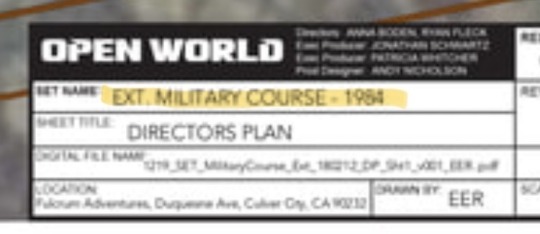
1984???? For Carol’s USAFA basic training???? This is impossible, the movie is wrong, and here’s why.
(Excerpt from my future video essay incoming)
There are no dates in Higher, Further, Faster; the marketing text on Amazon, Liza Palmer’s website, etc just says “80s.” So, we need to do some detective work.

We know that the 2019 film Captain Marvel takes place in 1995. Since it takes place in Southern California and Louisiana, the warm weather doesn’t tell us much about the time of year. Personally, I believe it takes place on March 8, 1995, because that’s the exact day I was born, and my birthday is the day the movie was released on to coincide with International Women’s Day. Regardless, Monica Rambeau is eleven years old in the film, putting her birth in 1983 or 1984. So, Maria’s pregnancy must have begun in 1982 or 1983.
Here’s a “fun” fact about US military academies: until less than one year ago (summer 2023, a full three years after Captain Marvel came out), cadets at USAFA who became pregnant were required to either drop out, have an abortion, or relinquish their parental rights to their child.
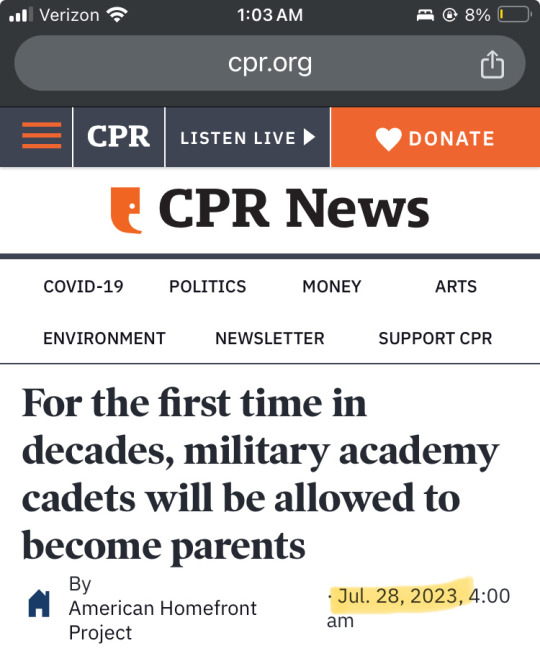
Dropping out also means reimbursing the government for your tuition for all classes you’ve taken up to this point, and giving up your ability to be commissioned as a second lieutenant in the Air Force upon graduation. Definitely not an option someone as driven as Maria wants to consider. In fact, we know this isn’t what happened, because this news article Carol hung up in her spaceship in The Marvels says that Maria Rambeau is a USAFA graduate.

We also know that Maria didn’t have an abortion, because, well, Monica Rambeau herself is tangible evidence. Theoretically, it is possible for Maria to have given up parental rights and adopted back her own child after graduation. Before the policy change in 2023 that allowed cadets to be parents, many found this to be their best option (see the article I screenshotted above). However, this process is really expensive and takes a lot of work with a lawyer over a period of months or years. From the little we know of Carol and Maria’s life pre-crash, (it was busy, they lived in an expensive area, and Maria only had Carol for support), I think we can assume that it’s less likely that Maria was forced to adopt her own daughter than that Maria graduated USAFA before becoming pregnant in 1982 or 83.
That still doesn’t answer the question of when this book takes place, though. The exact year is important, as the military had some major differences under the Gerald Ford, Jimmy Carter, and Ronald Reagan administrations of the 70s and 80s, and one of the things I want to assess this book on is accuracy.
Oh wait, what’s that? Another discriminatory policy that helps us date this book? That’s right, USAFA didn’t enroll women as cadets until Public Law 94-106 went into effect in 1976.

What’s more, Carol and Maria cannot have been part of this first group of women cadets, because in the book, there is an upperclassman character who is a woman. Officer Cadet Chen is one of the leaders of Basic Training for Carol and Maria’s flight, a position cadets aren’t allowed to hold until their third or fourth year at the Academy.
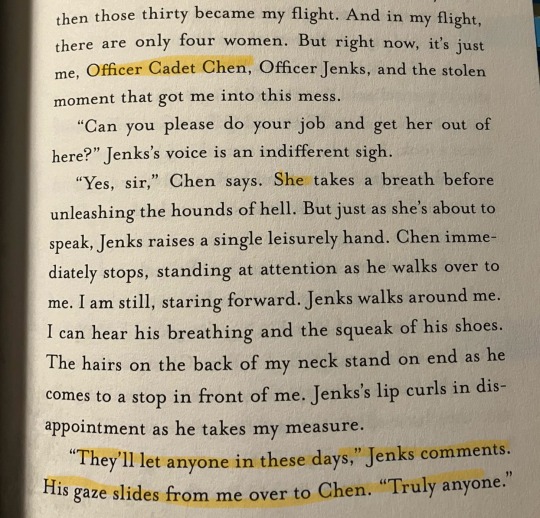
So, Carol and Maria must enter USAFA no earlier than 1978 to be two or more years younger than Chen, and must graduate no later than 1983 for Monica to exist. To comply with the marketing blurb’s declaration that this book takes place “in the 80s”, let’s say that Carol and Maria’s first year is the 1979-1980 school year.
(End excerpt)
In conclusion, Maria and Carol were born in 1960 or 1961 (with pretty equal likelihood of which birthday makes them 18 at the start of the book, since USAFA basic happens the summer before the school year), not 1965. It would be impossible for them to have done basic training in 1984 as in the production drawing, because they would have to have already graduated and be well on their way to test pilot school which is a whole other policy can of worms before Monica’s birth in 1983 or 1984.
In conclusion conclusion, Carol is ~34 in Captain Marvel and ~64 in The Marvels, and the MCU should hire fans to fact check for them.
#thank u blindluck for bringing my attention to this wiki I had such a fun time on this rabbit hole#the marvels#captain marvel#carol danvers#maria rambeau#higher further faster book#carolmaria#danbeau#monica rambeau
84 notes
·
View notes
Note
Soulmate AU Danny Phantom, and Vlad and Danny found out that they are soulmate for each other from the very-very first meeting, like they don't even know the character of another, all they got is sh*** of a big age gap, and as for Vlad also: you've been having a crush on your soulmate's mom for 20 years. Idk, it may be skin's glowing where soulmates are touching each other? How much in shock do halfas be? Which parent accept it first?
They were called soul sigils. Temporary signs that appeared on the skin of people whose lives were destined to entwine.
Sigils presented twice, sometimes three times, during a person’s life: at birth, indicating that their partner was already alive and waiting for them; at the first meeting; and at the final separation.
Vlad Masters was not born with a sigil. His left hand went unmarked through his childhood. He lied to his peers in high school, saying he’d already gotten his a long time ago.
By the time he enrolled in his first semester at the University of Wisconsin-Madison, he was beginning to worry. How much of his life was going to pass before his special someone was born?
At twenty-four, on the verge of completing his Master’s degree, he began to believe that perhaps he was destined to be alone. It wasn’t unheard of. Nearly twenty percent of the population never presented soul sigils. They were free to live however they pleased. It wouldn’t have been a bad fate, but Vlad yearned for partnership. His parents were dead, his family estranged. And Madeline, the girl he’d hoped would be The One, had her sigil appear when she met his best friend, Jack.
Vlad slept in the lab that night. He couldn’t bear to go back to his dorm room and listen to Jack’s lovesick exultations.
Then the portal accident happened, and he stopped caring about sigils and love for the next few years. He was too busy recovering from the effects of radiation poisoning to concern himself with the silly banalities taking place outside his hospital ward.
Maybe he would die alone. That was always a possibility.
He didn’t. He was discharged in 1983 and walked out the hospital doors a new man.
Half of one, anyway.
By the late 1980s he was learning how to use his newfound powers, robbing his way toward a life of affluence. He began construction on his own portal, using the blueprints stolen from Jack—who, he discovered, had married Maddie while he was rotting in a hospital bed and had moved to a podunk town called Amity Park. They were expecting their first child, a girl.
Vlad threw himself into his work and ignored the Fentons and their happy, growing family. His loneliness gnawed at him.
Late one evening, just a few months before his thirty-first birthday, he pulled his work glove off his itching hand and blinked, staring.
His sigil. But he felt no joy. How could he? His soulmate was young enough to be his child.
Within twenty-four hours the mark had faded, and Vlad pretended he’d never seen it. He had no interest in getting involved with someone so young.
Fourteen years later, the Fenton family climbed the front steps of Vlad’s home with their teenage son, Danny, who was absently scratching his hand.
Vlad felt the tingling. He didn’t have to look. The evidence was staring back at him: a pair of stunned blue eyes that flashed ecto-green.
#asks#danny phantom#vlad masters#danny fenton#pompous pep#soulmate au#soulmates#soulmarks#ficlet#hjbwrites#anon this just spewed out in 1 sitting thank you i didn't know i had it in me#it was fun :)#i'll probably rework this into something longer and post it on ao3
108 notes
·
View notes